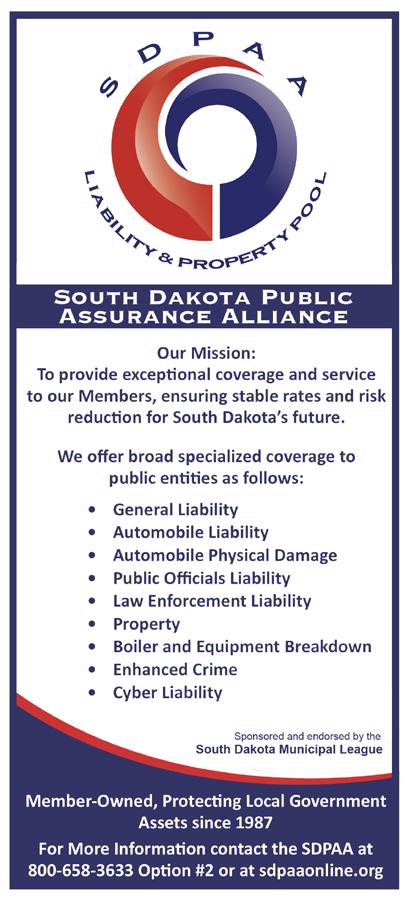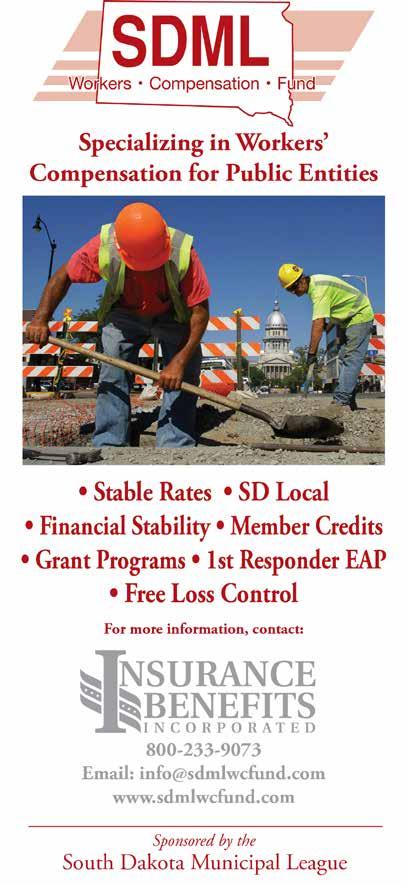
























SARA RANKIN | SDML EXECUTIVE DIRECTOR
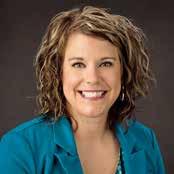
The 2025 South Dakota legislative session posed significant challenges for municipalities. The advocacy team at the South Dakota Municipal League worked diligently to assist local governments as they faced a surge of legislative proposals impacting local control and municipal resources. While the legislative process is always unpredictable, this session was particularly turbulent. Bills that initially appeared beneficial to municipalities were abruptly altered, often without input from those responsible for implementing them. Key funding sources faced intense debate, delays, or reallocation.
One major concern was preemption bills that sought to limit municipal authority. House Bill 1218, for example, aimed to take away cities’ power to set policies on firearm possession by employees and volunteers in city-owned spaces. Such measures weaken local decision-making and make it harder for communities to govern effectively.
Property tax relief was another hot topic, with several bills that could impact municipal budgets. House Bill 1235 proposed capping local governments' property tax revenue growth, limiting funds for essential services, while Senate Bill 191 sought to restrict property assessment increases, both bills were killed on the floor. Senate Bill 216, the only property tax relief bill to make it to the Governor’s desk, caps growth on new construction and assessment increases for five years. While tax relief is important, these changes could hurt cities' ability to fund public safety, infrastructure, and other services.
In response, the South Dakota Municipal League worked tirelessly to advocate for local governments. We engaged with lawmakers to stress the importance of local control and adequate funding. Our efforts, along with those of local officials, helped highlight the unintended consequences of some legislative proposals.
This session made it clear that state and local governments must work together. Cities are not just administrative divisions—they directly impact residents' daily lives. Moving forward, collaboration and mutual respect between state and local leaders will be key to finding balanced solutions.
Despite the challenges, municipal leaders showed incredible dedication to their communities. Their hard work is a reminder of the vital role they play in South Dakota. It is our collective responsibility to support them so they can continue serving effectively.
As this tough legislative session comes to an end, I urge you to pause, reflect on what we’ve learned, and get ready for what’s next. We’ve faced challenges before and will do so again, always putting our communities first.
Now, the real work begins. ■
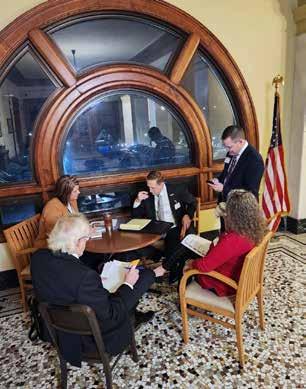
PRESIDENT
Carolynn Anderson Finance Officer, Wall
1st VICE PRESIDENT
Leland Treichel
President of the Board, Roscoe
2nd VICE PRESIDENT
Michelle DeNeui Finance Officer, Spearfish
TRUSTEES
Paullyn Carey
Finance Director, Huron
Lance Lehmann
Councilmember, Rapid City
Dawn Murphy Finance Officer, Tea
Richard Thomason, Councilmember, Sioux Falls
Laurie Woodward
City Administrator/Finance Officer, Custer
PAST PRESIDENT
Harry Weller
Mayor, Kadoka
Sara Rankin
DISTRICT CHAIRS
Dist. 1 | Mike Grosek
Mayor, Webster
Dist. 2 | Jameson Berreth
City Administrator, Madison
Dist. 3 | Derick Wenck
Mayor, Harrisburg
Dist. 4 | Shauna Meyerink, Finance Officer, Platte
Dist. 5 | Kristi Honeywell, City Administrator, Pierre
Dist. 6 | Rick Boschee
Mayor, Bowdle
Dist. 7 | Gary Weismantel
Mayor, Herreid
Dist. 8 | Brittany Smith City Administrator, Philip
Dist. 9 | Misty Summers-Walton Finance Officer, Hot Springs
Dist. 10 | Gina Carpenter Human Resources Officer, Belle Fourche
District chairs are elected at the district meetings held in late March/early April. They will be listed in the May issue.
Executive Director
Lori Butler Deputy Director
Jessica Carr Director of Member Engagement
Emilie Miller Director of Marketing and Communications
Lisa Nold
Director of Risk Sharing Services
Rob Peterson Director of Municipal Electric Services
Krista Kerns Administrative Services Coordinator
Kristi Osterkamp Senior Accountant
Jackie Lopour Accounting Assistant
SD Public Assurance Alliance
Lynn Bren
Executive Director
Kristina Peterson Deputy Director
Becky Brunsing Member Services Representative Paytra Nichols Underwriter
The legislative session has wrapped up and there may now be some changes to processes we have been used to and codified laws we normally refer to. Rest assured—the SD Municipal League will be there to assist members with understanding these changes and how they will affect our communities.
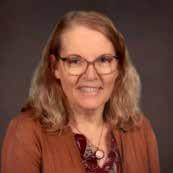
April is here and hopefully it will bring showers, as the saying goes. Not only for the “flowers in May” but more importantly for the agriculture industry that surrounds our communities. Tourism and agriculture are the main industries in our community as well as other communities across the state.
April is also the month when some municipalities hold their elections. This was an off year for us in Wall. We changed our terms from two- to four-year terms, which means that we only have an election every other year unless a vacancy is created by someone not completing their term. The thought behind this term change was that two years really only gave elected officials a glimpse of what was involved in their positions, but four years would help them have a better understanding of it and give them time to thrive. It has worked well for us.
To those of you official who have won the election, and this is something new, good luck and be sure to take advantage of the Municipal League as a resource to provide you with training and information. Of course, you don’t have to be a newly elected official—even long-time officials and employees can benefit from the ever-expanding League services.
Respectfully,
Carolynn Anderson
CHRIS FABIAN | TYLER TECHNOLOGIES, NLC PARTNER
Amid tightening budgets and rising demands, local governments and school districts are turning to artificial intelligence (AI) to revolutionize their budgeting processes. By leveraging AI tools, these agencies are discovering new efficiencies and funding opportunities that align resources with community priorities and save money.

Budgeting with limited resources is one of the biggest challenges facing local governments. Making informed decisions about funding allocations is even more daunting when faced with resource scarcity, stagnant budgets and the strains of a changing workforce.
Traditional budgeting methods, including acrossthe-board program cuts without regard for prioritization and resource allocation based on current trends, have failed to lead to informed, effective decision-making. Answers to questions such as how funding streetlighting improvements relates to a city’s priority of reducing crime, for example, are simply out of reach.
Agencies struggle to make informed decisions without the context necessary to connect lineitem expenditures with programs and community outcomes. Such line-item budgeting has led forward-thinking programs such as climate action, infrastructure, cybersecurity and safety
Reprinted
to go unfunded. Additionally, governments still mired in traditional budgeting methods can be increasingly burdened by a shrinking workforce, with tech-focused Generation Z workers, who lack institutional knowledge, overtaking Baby Boomers.
Moving from line-item budgeting to a priority-based method has allowed small and large government agencies to create new partnerships, identify efficiencies and pinpoint priority programs. By meeting the needs of their communities and focusing on societal goals, municipalities across the country are focused on the horizon.
Priority Based Budgeting is a driving force behind this transformation, providing a handy lens to ensure that we can thoughtfully question where all the money goes today and ensuring that we can find ways to reallocate it toward the underfunded priorities that always are in need of additional resourcing.
In Priority Based Budgeting, AI and machine learning are employed to make complex budget data actionable across the public sector. This technology helps communities find efficiencies and make predictions for reallocating resources using a priority-based budgeting model. The result allows agency leaders to put their money where their motivations are — that is, to align government resources with a community’s highest priorities.
The rise in the number of priority-based budgeting success stories reveals that when agency leaders use priority-driven budget solutions, the impact can be transformative:
• When Pittsburgh, Pennsylvania was struggling to maintain core services during COVID, implementing a priority-based budget model allowed city leaders to identify $41 million in resource reallocation and new revenue. As a result, they were able to free up funding for a climate action plan, fulfilling aspirations to focus on the future.
• In Washington County, Wisconsin, County Executive Josh Schoemann took the lead in
reallocating 15% of his small county’s entire operating budget using a priority-based budgeting framework. This effort turned government-dependent Parks & Recreation into a 100% self-sustaining department.
• Fort Worth, Texas has future-proofed its budgeting process by focusing on individual programs rather than traditional line-item expenditures. By evaluating programs against multiple criteria, such as mandate requirements and revenue potential, the city aligns its financial resources with strategic priorities like public safety and infrastructure needs.
AI modeling significantly eases the lift of program budgeting, helping local governments as they recover from pandemicera workforce shortfalls. By analyzing massive data sets, AI uncovers patterns and makes logical connections between programs and priorities. This AI-driven approach allows agencies to manage the budgeting process effectively despite limited human resources. It also compensates for the loss of retiring baby boomers while attracting Gen Z workers
who are drawn to cutting-edge technology and data-driven decision-making.
And when government agencies put priority-based budgeting to work in their communities, it provides the added benefit of transparency. Priority Based Budgeting supports a transparent budget-development process, showing that investments are made thoughtfully and in alignment with strategic priorities.
Priority-based budgeting is poised to become the new standard for state and local governments across the country. By embracing priority-focused budget reallocation, government leaders can look to the future of their communities with confidence and renewed excitement, even in the face of resource scarcity. ■
Visit the NLC Strategic Partnerships page at www.nlc.org/ about/partnerships to learn more about the organizations like Tyler Technologies dedicated to making NLC the premier resource for local governments.

LYNN BREN | SDPAA EXECUTIVE DIRECTOR
I have collaborated with our Members for nearly 25 years in various capacities. When I first started handling claims for the SDPAA, the majority of contacts were made via telephone and supplemented with in-person visits. Investigations were carried out by tape recorded interviews and film cameras. Fast forward what seems like just a few years, and suddenly we are immersed in social media, with the various platforms being some people’s main source for news and information on a variety of topics. With this aggressive evolution of technology, our local governments must be prepared to understand how the use of digital engagement within your various communities can be used to foster positive communication and community engagement.
People have come to expect that any information they may need should be available online. I will admit that I have searched for an agenda or a piece of contact information for a specific entity and immediately become disgruntled when the information isn’t posted, or it hasn’t yet been updated, or there is simply no website at all. Even though I grew up in the era of corded phones and paper telephone books that clogged up your mailbox once every couple years, I, too, expect that the information I need should be readily available with a quick keystroke in my search bar.
Local governments should be prepared to shift from solely using traditional methods of communication such as publishing agendas and minutes in the local newspapers to including posting those on the entity’s website or a social media account. Using digital tools can help enhance transparency, encourage civic engagement, and build stronger communities!
Communications sent via digital tools and platforms can be sent instantaneously. These tools are great for providing information to those in your community about developing situations, upcoming events, or even as reminders for various meetings. Use of these tools for information sharing will help to make citizens feel that they can be a part of the decision-making process. This opens the opportunity for citizen engagement, and for them to have the opportunity to meaningfully participate in the governance process. When citizens are informed, they are more likely to engage and support your local government initiatives.
Alternatively, when citizens are getting their information from someone who might only know (or might only desire to share) just a part of the information, now you have a digital


mob to deal with. No matter what community you live in, often getting the message out to everyone may require innovative approaches to technology use.
Social media has become a household staple in the majority of homes across America. While most social media platforms were intended for personal use, platforms such as Facebook, X, Nextdoor, and the like also allow local governments to promote community engagement by creating the ability for real-time updates as well as a forum to seek feedback and to respond to community concerns. Using a previously implemented social media policy, you can use these digital tools to engage with your communities by posting regularly about your council or commission meetings, projects that are occurring or upcoming within your community and emergency alerts.
In my local community, both our school and our city use a messaging platform to text out information such as late starts and snow alerts, so we know when we need to clear our vehicles from the streets. Many of our Members already use a live stream service for meetings to help to increase accessibility, and others allow for Q&A sessions which would further enable the engagement of our local governing bodies with the citizens they serve. If you don’t have a media policy, or if you’re not certain that it encompasses more than just those emergency media press conferences, have your local counsel review it. If you need a sample policy, and you’re a Member of the SDPAA, give us a call!
No matter what your media policy says, it is critical that any engagements with the public are meant to encourage a respectful discussion of the subject matter. These communications and engagements should always be
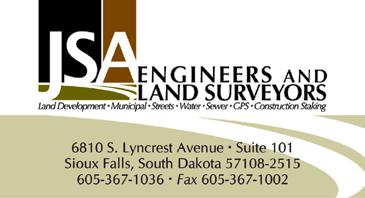
initiated with the intent of providing timely and accurate information on the diverse topics that would be of interest to your community. Those responsible for monitoring social media pages must be prepared to promptly address misinformation with appropriate factual information.
Beyond social media platforms, the digital tools used by local governments can be as simple as their own local website. However, even the most sophisticated entity can set themselves on a path for communication failure if they have a website that is disorganized or difficult to navigate. Take time to work through your website. Ask yourself if the website is user friendly and if the navigation makes sense. If you have the opportunity, ask someone who isn’t familiar with the site, or even your community to walk through your website. Gather feedback from them as to how well they were able to navigate and if the interfaces made sense. If your website offers an online payment portal, double and even triple check with your website host, the payment processing carrier, and your own IT provider, that all appropriate security measures are in place. Adopting and frequently reviewing and training on your data protection policies, and the applicable laws, will help to reinforce public trust in the use of your website.
For those with websites for your communities, check your links. Make sure that any linked domains are still accurate, and that the information linked on your website is still relevant. Make sure that your interactive maps, statistics, and other revolving information is updated regularly to avoid the appearance of complacency.
As with all the good things that come with digital tools, you must also be prepared to deal with the less positive aspects of our digital society. One key thing that you should keep in mind is that not all of your residents are tech savvy. I recall there being a commercial with three wonderful ladies sitting on a couch listening to their friend talk about her wall and showing them all of her pictures she had recently posted. Of course, the visual was not what we all envision – a Facebook or Instagram feed – but rather her own living room wall covered with pictures of her recent meals, her grandchildren, and children. Be prepared to offer these folks the same information in your local administration office that you post online. Printed newsletters are still a terrific way to catch the attention of your local community.
Your media policy should offer guidance on how to address misinformation and online harassment. Unfortunately, the tech age has brought a near instantaneous and massive sharing of information. Once posted, whether factual or not, it can be virtually impossible to remove posted misinformation. Having someone monitoring your social media accounts, and other accounts that are often the place where misinformation may be spread, will help you to identify misinformation and correct it by providing the appropriate factual information. Your social media accounts should be monitored to ensure that participants are respectful of not only your team but of other users within the social media platform and in your user
groups specifically. Establishing clear social media policies both internally and within your social media groups will set the expectations of the group and will help your moderators enforce the boundaries established.
Communities in South Dakota have already embraced the digital tools which enable them to quickly communicate with their citizens. YouTube streams, online budget publications, text alert systems, and Zoom meeting engagements are all being used across the State. As technology continues to evolve (I’m sure you’ve heard AI mentioned a time or two recently), the ways local governments can and will be expected to communicate with their citizens will also need to evolve. Now may be a good time to consider if your community needs a digital makeover and keep looking for innovative ways to revolutionize engagement in your own local communities. And if you’re not sure where to start, call your neighbor, they’re probably on the same adventure you are!
The SDPAA is always looking for ways to encourage a community of sharing and networking, especially among SDPAA Members. Check out the SDML and SDACC websites for upcoming training opportunities. With these conferences come the opportunity to network, to talk about topics just like this, and to collaborate with others who may be facing the same questions you are! ■

SIOUX FALLS, SD 605-543-5206
RAPID CITY, SD 605-341-8780
FARGO, ND 701-281-1718
PIERRE, S.D. – Each of South Dakota’s four tourism regions showed an increase in visitor spending in 2024, according to a recent detailed analysis of visitor spending in South Dakota. Conducted by Tourism Economics, the latest report shows that visitor spending continues to grow, positively affecting every county in South Dakota through taxable sales, job creation, and wages.
The Black Hills and Badlands (2.4%) and Southeast (4.5%) regions both saw significant growth in visitor spending last year. Both the Glacial Lakes & Prairies and the Missouri River regions saw positive (0.2%) growth in this category in 2024.
Total visitor spending in South Dakota reached a record high of $5.09 billion, a 2.8% increase compared to 2023.
“South Dakota’s breathtaking landscapes, rich history, and vibrant communities captivate visitors from across the world,” said Governor Larry Rhoden. “In 2024, tourism supported more than 58,000 jobs for South Dakotans and provided $2.2 billion in household income to those families.”

The top 10 counties with annual growth were evenly distributed across the state, including Potter (12.3%), Ziebach (12%), Turner (11.1%), Mellette (9.5%), Deuel (7.1%), Clark (6.8%), Custer (6.2%), Day (6%), Douglas (5.9%), and Roberts (5.7%). This regionally diverse growth highlights how tourism benefits counties of all sizes, including rural areas and larger travel hubs.
“Our industry has so much to be proud of,” said James Hagen, Secretary of the South Dakota Department of Tourism. “The widespread growth across counties and regions, both large and small, demonstrates just how eager visitors are to experience every corner of our state. The tourism industry is strong, united and continues to work hard to cross-promote attractions, parks and businesses from one end of the state to the other. That unity is providing an essential economic boost to our state and local communities.”
To view the full Tourism Economics County and Region Level Impact Report, visit SDVisit.com. ■









PIERRE, S.D. — Governor Larry Rhoden and the Governor’s Office of Economic Development (GOED) recently celebrated the achievements of communities and leaders at this year’s Governor’s Conference on Economic Development in February.
Governor Rhoden announced Mitchell as the Community of the Year and presented Ted Haeder of Huron with the Excellence in Economic Development Award.
“South Dakota is fortunate to have communities and individuals like Mitchell and Ted,” Governor Rhoden said. “Congratulations to this year’s winners and to all those working in economic development across the state to help keep us Open for Opportunity.”
The Community of the Year award recognizes a community that has made exceptional strides in economic development, job creation, and quality of life. Mitchell has demonstrated outstanding progress, securing a major soybean plant that created 85 full-time jobs. The community is also investing in housing, launching a childcare grant

program, and attracting new residents through its innovative Community Concierge Program.
The Excellence in Economic Development Award honors individuals who have made significant, longlasting contributions to South Dakota’s economic growth. Ted Haeder has been a driving force in expanding the state’s economy, developing multiple industrial parks, increasing housing opportunities with more than 200 new homes, revitalizing downtown areas
with façade grants, and strengthening Huron’s workforce through career and technical education programs.
Joe Fiala, commissioner of GOED, added, “Communities like Mitchell and individuals like Ted are exactly why people want to live and do business in South Dakota.”
Next year’s Governor’s Conference on Economic Development will be held in Pierre Feb. 24-26. ■


The Snyder & Associates team is committed to balancing modern development with the preservation of our shared cultural heritage. Recognizing the importance of protecting historical and cultural resources embedded in the landscapes where we work, we’ve integrated archaeological expertise directly into our operations. By doing so, we respect and preserve cultural legacies while advancing essential engineering solutions.
To support cultural preservation efforts, Lina Ramirez, the in-house archaeologist, plays a pivotal role in guiding projects through complex archaeological requirements. Her expertise ensures that work meets regulatory frameworks and helps safeguard important cultural resources, such as artifacts or historically significant sites that may otherwise go unnoticed in construction projects.
“Lina brings cultural resources in-house so that we can provide improved services and expedited schedules to our clients,”

AFFORDABLE HOUSING SHOULDN’T JUST BE A DREAM — IT SHOULD BE A REALITY.
South Dakota Housing o ers financing solutions for:
• Housing
•

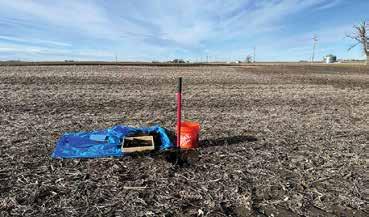
explains Jeff Walters, Environmental Science Group Leader. “The urgency of funding and permitting requirements puts pressure on our project timelines, making Lina’s involvement crucial to ensuring efficiency and regulatory compliance.”
Cultural preservation requirements often come into play when certain key actions are taken. These actions trigger the need for archaeological assessments:
• Permitting: Many engineering projects require permits that include cultural resource reviews to ensure construction does not disrupt historically signifi cant areas. Lina’s early involvement helps integrate these reviews seamlessly into project schedules, minimizing delays.
• Funding: Federal and state funding often requires cultural assessments as part of compliance with regulations like Section 106 of the National Historic Preservation Act (NHPA). Section 106 mandates that any federally funded or permitted project evaluate potential impacts on historic properties, ensuring that development doesn’t erase traces of history.
• National Environmental Policy Act (NEPA): Projects subject to NEPA require environmental reviews, which often include archaeological assessments to evaluate their potential impact on cultural resources. Lina’s experience helps meet these requirements efficiently, whether the project involves state or federal land.
• Public Land Use: Projects on public lands must adhere to regulations that protect cultural resources. Whether it’s a federal park or a state-owned parcel, thorough archaeological surveys are required to preserve the site’s historical significance.
At Snyder & Associates, Lina collaborates closely with project managers to ensure compliance with Section 106 regulations. These regulations require thorough consideration of any potential impacts on historically significant properties before projects can move forward. By having an archaeologist like Lina on staff, we ensure this process is integrated into the overall project timeline.
This proactive approach allows us to communicate efficiently with State Historical Preservation Office (SHPOs), Tribal Historic Preservation Offices (THPOs), and other stakeholders to assess and mitigate any adverse effects on cultural resources. As a result, projects proceed smoothly without unnecessary delays, and clients receive clear guidance on meeting regulatory requirements.
Archaeology plays a pivotal role in ensuring that projects do not inadvertently erase traces of our collective history. Whether it’s an artifact or a structure of historical significance, archaeological assessments help preserve cultural landmarks for future generations. Lina’s role ensures that these discoveries are handled appropriately, helping clients maintain compliance with laws and regulations while promoting cultural preservation.
As Lina explains, “The archaeological surveys required for our projects vary depending on the project’s specific regulatory triggers. We’ve seen this play out in projects ranging from mitigation banking to the complex permitting needs of the Des Moines Water Works transmission main project.”
For privately funded projects, archaeological requirements may arise if federal actions, such as obtaining a permit from the U.S. Army Corps of Engineers, are involved. These actions often trigger the need for cultural resources reviews under Section 106. Our team’s deep understanding of these requirements helps keep projects on track, regardless of the complexity of the regulatory landscape.
The integration of archaeology into engineering at Snyder & Associates sets the firm apart. Not only do we protect cultural resources, but we also streamline project management, providing a more efficient and cost-effective service to clients. Having Lina on staff eliminates the need for outside contractors and ensures that all cultural considerations are addressed in real time.
This collaboration transforms our firm into a multi-disciplinary entity that excels in both technical expertise and cultural stewardship. The result is a more responsive and compliant approach that minimizes potential delays and keeps projects on schedule.
If your project requires cultural resource work, let Lina and our Environmental Team lead the way toward project success. Contact us today to discover how our integrated approach ensures efficient project management, cultural preservation, and regulatory compliance. ■

PIERRE, S.D. – The South Dakota Department of Transportation (SDDOT) seeks input from residents and stakeholders to help develop the Statewide Active Transportation Plan. This comprehensive initiative is aimed at enhancing the state's public transportation system by incorporating active transportation modes such as walking and biking.
The plan will focus on improving safety, connectivity, and public health across state highway corridors in South Dakota. Collaboration and input from residents, businesses, local governments, tribal governments, regional organizations,
and other community groups will help identify key elements.
To learn more about the project, visit https://isginc.mysocialpinpoint.com/ sddot-active-transportation-plan.
On the website, participants will be able to:
• Read and learn about the purpose of the Statewide Active Transportation Plan
• Watch a video that explains how to provide comments and take the survey
• Take a survey to share thoughts and feedback on the plan
• Provide location-specific comments within an interactive statewide map
All residents and stakeholders are encouraged to participate in this important initiative by providing input to shape the future of active transportation in South Dakota. Project updates can be obtained by following the website and signing up for email updates.
For additional information, please contact Logan Gran, Active Transportation Engineer at 605-7734912 or email at Logan.Gran@state. sd.us. ■
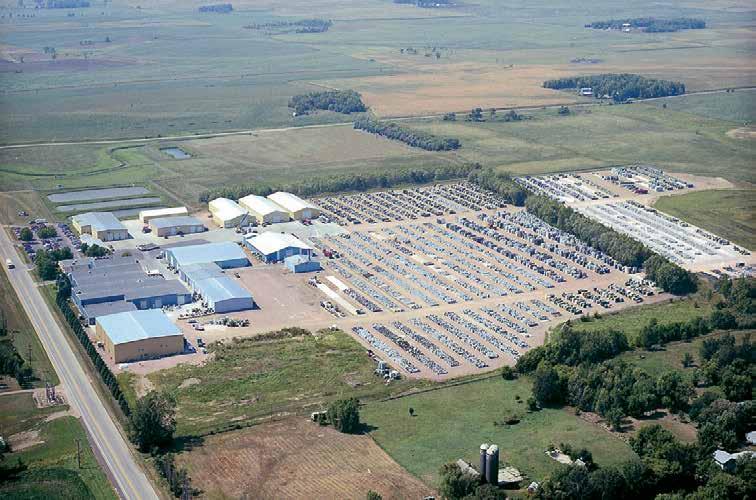

State law limits the amount of property taxes that local governments (counties, cities, townships, fire districts, etc.) can collect from their property owners. Local governments are limited to the amount of property taxes they collected last year, plus an increase for inflation based upon the consumer price index (but not more than 3%), and for new construction within the taxing jurisdiction.
The State Economist from the South Dakota Bureau of Finance and Management calculates the consumer price index (CPI) annually using federal statistics from the US Department of Labor. It is reported to the Department of Revenue, who forwards it to the counties by February of each year. CPI is available to all taxing entities and is the same for all taxing entities.
State statutes allow for counties, fire districts, and cities to store any unused CPI factors from the previous three years. The Department of Revenue keeps track of the CPI usage and provides that information upon request.
Market increases in the value of the property within the taxing district automatically decrease the property tax rates to ensure that the caps are not exceeded. An example to illustrate how the property tax limitation works:
• Last year, the total property valuation within a city was $100 million and the city property tax budget was $300,000. To collect that amount, a levy of $3.00/$1,000
of value was calculated by the county auditor.
• This year, the CPI was set at 3%. The city saw a valuation increase of 1% due to new construction in a new subdivision. Also, the county assessor increased values based upon market indications. The new value of the city is $110 million.
• Under the property tax limitation, the city can increase the $300,000 it received from property taxes last year by 4% (3% for CPI + 1% for growth) for a total of $312,000.
• To prevent the city from going over the cap, the tax rate calculated based on the $110 million of value within the district automatically lowers to $2.84/$1,000 of value.
Prior to the property tax limitations being implemented, property taxes had increased at a rate of about 6% annually. The property tax caps used today have significantly slowed this increase. If the historical rate of property tax growth had continued unchecked, property owners would be paying over $2.8 billion in property taxes. Instead, property owners are paying just over $1.6 billion of property taxes. ■


Lake Preston may be a small South Dakota town, but it is working to make big improvements.
The project dates back to 2019 when the city council began discussing new road development. From there, the city applied for grants and came up with phases to complete the projects.
Here is a breakdown of the phase sand projects completed.
Phase 1 – The city applied for $8,602,000 for funding to improve water and sewer in the town. This involved 32 blocks of water and sewer. The City of Lake Preston was awarded the fund package in 2021. In 2022, Halme Inc. started the project, and it was finished in 2024.
Phase 2 – The city applied for funding in 2021 for $5,520,000. This included 11 blocks of water and sewer. They were awarded their fund package in 2022. The bid was awarded to Rounds Construction Inc. in 2023, and

construction was completed in 2024.
Phase 2 B – In 2023, the city applied for $5,145,700 in funding for 10 blocks of water and sewer. This package was funded in 2024. The plan is to bid and start this part of the project in 2025.
City Employee Brian Zeeck was thankful these phases were able to be completed.
“During these phases, a majority of four-inch cast iron and six-inch asbestos lines were replaced, something that has needed to be done for a long time,” said Zeeck. “The majority of the sanitary lines were also replaced from clay tile to plastic PVC.”
For street projects, infrastructure must be returned to its previous condition. If the street had curbing and pavement, that would be replaced as well. If the street was gravel, new gravel was applied.
The city has plans to continue
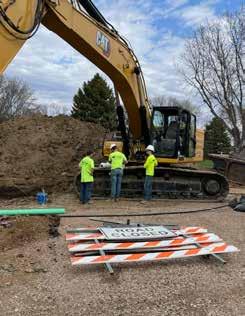
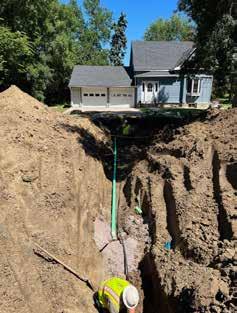
improvements to the roads in town running east and west. These streets do not have infrastructure and therefore were not included in Phase 1 or Phase 2. However, the plan is to implement a block-by-block plan in the future as the city budget allows.
Ron Nelson, long-time resident of Lake Preston, has enjoyed watching this project. In 2023, the water, sewer, curb gutter and street asphalt surfacing were completed in front of his residence. Many mornings during the six to seven months this work was being done, he enjoyed a cup of coffee on his porch, watching the progress.
“There were at times up to three excavators and a bulldozer on the street piling and pushing dirt up into high mounds,” Nelson said. “Were there inconveniences? Yes, we had no access to our driveway or garage during some of the construction period, but we knew, when finished, it would be a major improvement to the whole community.”
The city has been working on improvements to the water tower as well. The City of Lake Preston originally applied for funding during Phase 1, but due to high costs and the location of the tower, it was separated from Phase 1.
The project was pushed back to 2022, when the city applied for new funding and was awarded a funding package in 2023. The project was bid out in 2024 and awarded to Maguire. Construction is currently underway with a future completion date in 2025.
The undertaking is projected to cost just over $2,000,000. The city was awarded a loan with 3% interest for 30 years with an 85.1% principal forgiveness, not to exceed $1,702,000.
The original plan was to take down the old tower and construct a new water tower in the same location. Because of proximity concerns to resident houses during construction, it was decided to construct at a whole new location.
The water tower is now being built in the southeast part of town by Silver Plains Assisted Living. The City of Lake Preston was able to purchase this land from the Bumann family.
This also allows the city to use the old water tower instead of running off Kingbrook Rural Water pressure during



















construction. Once the new water tower is completed, the old tower will be taken down.
This has been a long process; there is still work to be done to complete the entire project, but once finished, it will be a huge improvement to the City of Lake Preston.
“We have nothing but praise for the forward-thinking city leaders and the tireless city employees who worked to make these advances possible,” Nelson said. ■




PIERRE, S.D. – The South Dakota Transportation Commission awarded 17 preservation, rehabilitation, and replacement Bridge Improvement Grants (BIG) totaling approximately $16.6 million at the February commission meeting held in Pierre. The goal of the grant process is to enhance the overall condition of critical assets that South Dakotans are dependent upon each and every day. These structures provide the link that drives the interconnectedness of the state’s overall transportation system while enhancing statewide economic development overall.
“Today the South Dakota Transportation Commission reinforced their commitment to improving the efficiency, safety, and access of the transportation system throughout our state,” said Joel Jundt, Secretary of Transportation. “The BIG program continues to be vital for the necessary preservation, rehabilitation, and replacement of local government structures, and the SDDOT commends the Transportation Commission for their continued commitment to provide state funding for this critical local government program.”
The City of Sioux Falls was the lone municipal recipient. County recipients included Aurora, Brown, Butte, Codington, Corson, Custer, Davison (2), Lawrence, Meade, Minnehaha, Pennington (2), Sanborn, and Union (2).
Fifty-three applications totaling $78 million in total project costs were received by the South Dakota Department of Transportation (SDDOT). In total, four cities submitted five applications, and 27 counties submitted 48 applications.
In order to be eligible for a BIG grant, a county must impose a wheel tax. In addition, a county must have a County Highway and Bridge Improvement Plan to detail proposed county highway and bridge improvement projects within the county for the next five years.
Each year, $7 million is dedicated from the license plate fees and from non-commercial vehicle fees. In addition, SDDOT annually sets aside $8 million per year of state highway funds to make a total of $15 million available for BIG. This

grant cycle, the Transportation Commission reallocated approximately $3.4 million from completed projects and awarded approximately $1.8 million in preliminary engineering (PE) grants last August, approximately $1.7 million in preservation (PR) grants, and approximately $14.9 million in replacement/rehabilitation (RE) grants for a total investment of $18.4 million to complete the 2025 grant cycle.
To date, the BIG program has awarded $182 million in grants to local governments, including the allocations made this year. Local governments are required to pay a minimum of 20 percent matching funds and have three years to expend the grant award.
Applications for the next round of the BIG program are due Friday, Aug. 1, 2025, for the Preliminary Engineering (PE) category.
For more information regarding the BIG program, contact Doug Kinniburgh at 605-773-4284 or visit https:// dot.sd.gov. ■

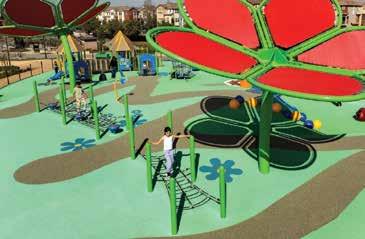











MEGAN GREIG | NATIONAL LEAGUE OF CITIES PROGRAM SPECIALIST
Reprinted from National League of Cities, www.nlc.org.
From public works and sanitation to economic development and community engagement, the role that city governments play in serving their local communities is complex and multifaceted. When the work is this widespread, communicating across teams can be confusing and timeconsuming, and it’s easy to slip into silos.
While a siloed approach to departmental work can feel like the most straightforward answer to the overwhelming responsibilities city governments face, there are important and long-lasting benefits for city governments who are willing to do the work to create systems for cross-departmental alignment.
What is Cross-Departmental Alignment?
Cross-departmental alignment is an organizational value for city governments which ensures that departments are committed to active communication, transparency and collaborative decision-making. This looks different in each city, but the core principle of this value is the promotion of ongoing and open communication between city employees in all areas of the government.
City governments who commit to building the infrastructure for cross-departmental alignment enjoy the ability to pool resources in areas including data, finances and staff capacity to target shared priorities within the community and provide better support to residents.
How Does Cross-Departmental Alignment Connect to Public Health?
Success in public health goes beyond clinical outcomes. Strong public health outcomes rely on government services

When information is transparent across departments, it’s easier to spot opportunities for shared resources and improved efficiency which allows cities to target their resource allocation towards specific goals.
that shape environments that allow all residents to live healthy and well.
Ensuring departments are communicating effectively and efficiently throughout city government is critical in ensuring success across all city goals. For instance, a city working to improve affordable housing opportunities for residents may develop a cross-departmental team focused on that specific issue, so staff and officials are more broadly and consistently aware of opportunities for their departments to contribute to the success of that goal. When a city takes steps to take on public health and overall resident wellbeing as key goals across departments, cross-departmental alignment becomes a critical tool in achieving those goals.
Establishing shared goals across departments is one of the key practices of cross-departmental alignment. Cities engaging in this practice create strong, multi-faceted systems for achieving their goals. Many of the public health issues facing city governments are complex and multifaceted, such as exposure to air pollution, access to public transportation or overall public safety. Effective action to confront issues like these requires unified efforts across departments. Shared goals also enable flexibility and offer departments to build unique strategies with systems developed specifically to achieve those goals.
For example, a city government may take steps to increase the urban tree canopy to improve air quality and combat the rising urban heat index. Establishing these outcomes as shared goals across all departments will encourage all departments to look for opportunities to increase the number of canopy trees planted in the community. This might look like the department of transportation partnering with the parks department to increase planting space, or the department of economic development designing an apprenticeship program to train arborists to take care of the newly planted trees.
Taking steps to streamline information sharing across departments not only expedites communication but also contributes to a greater sense of partnership and collaboration throughout city government.
Both formal and informal channels for information sharing can improve the effectiveness of cross-departmental efforts and improve overall buy-in for new policies and programs designed to improve resident health outcomes.
Cities looking to improve their information-sharing practices can start by considering what regular channels of communication already exist between departments, and how those channels could be used more effectively. This might look like instituting a weekly internal newsletter for departments to share updates or regular meetings between department heads to highlight challenges and opportunities in their work.
Depending on the size and structure of your city government, ensuring alignment and communication across all departments can be a challenge. Building structural supports such as a specific office for coordinating between departments or assigning liaisons with departments to navigate cross-departmental communication can institutionalize these operations and keep things running smoothly.
Ideally, the structural supports will allow your city’s crossdepartmental alignment efforts to withstand the changes that come with personnel turnover and the passing of time. Doing the work to institutionalize these practices will enable your city to keep building towards greater effectiveness and communication throughout all departments, ultimately benefiting the health and wellbeing of your residents in all areas of life. ■ 2 3
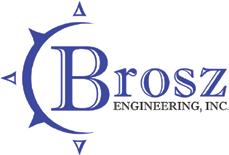
DISTRICT 10 MEETING, Deadwood
DISTRICT 9 MEETING, Custer
ELECTRIC CONFERENCE, Watertown
DISTRICT 8 MEETING, Fort Pierre
BUILDING OFFICIALS ICC TRAINING, Rapid City
BUILDING OFFICIALS ICC TRAINING, Sioux Falls
POLICE CHIEFS' AND SHERIFFS' CONFERENCE, Deadwood
Fort Pierre
ELECTRIC GOLF TOURNAMENT, Madison
HUMAN RESOURCES SCHOOL, Pierre
FINANCE OFFICERS' SCHOOL, Pierre
BUDGET TRAINING, Rapid City
BUDGET TRAINING, Sioux Falls
ELECTED OFFICIALS WORKSHOP, Pierre 16 JULY
(THRU OCT 3)
ELECTRIC SPORTING CLAYS SHOOT, Humboldt SDML ANNUAL CONFERENCE, Pierre
LISA NOLD | DIRECTOR OF RISK SHARING SERVICES








If you haven't got your health, then you haven't got anything.
Simply put—your health matters. And the Health Pool of South Dakota is helping members achieve their vital wellness goals with the recent addition of a new, robust, easy-access health resource.
We’re proud to introduce Wellmark Connect powered by WebMD®, a new tool included in your Wellmark® Blue Cross® and Blue Shield® benefits. If you’re a member of the Health Pool of South Dakota, it’s completely free!
It’s also easy to use, with anytime/anywhere access from your smartphone and other devices through the Wellmark app.
This personalized digital platform features:
• Daily Habits™ plans - Plans and habit-tracking tools to help you build lifelong health patterns through behavior change science and small, actionable goals.
• Mental health podcasts by Beyond Well SolutionsAccess an extensive mental health podcast library on topics including anxiety, insomnia, relationship stress, and more.
• Health and well-being content - Guidance on topics that matter to you—mental health, diabetes, weight management, fitness, and more.
Health Pool members can access Wellmark Connect by logging in/creating an account on myWellmark® or they can download the Wellmark mobile app at myWellmark.com, the

App Store®, or Google Play™. The first step is to complete the confidential Wellness Assessment—answer just a few questions about your health habits and risks. From there, Wellmark Connect provides personalized recommendations and a dashboard with tools and information tailored to your needs.
Wellmark Connect is just one of the benefits of belonging to the Health Pool of South Dakota, a risk-sharing pool created, sponsored, and endorsed by the South Dakota Municipal League to provide health coverage for local governments. The Pool currently serves over 80 public entities, providing health coverage to over 1,200 lives.
Request a quote for your organization at www.healthpoolsd. org. If you’re a current member, visit the website for member news, wellness tips, and information for making the most of our your membership for yourself and your employees. ■




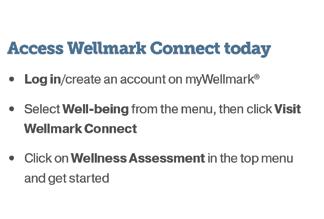



South Dakota has one of the fastest growing cremation rates in North America, currently sitting at 53.8%. That number is expected to hit 64.0% by 2028. By 2033, the cremation rate is projected to be 72.9%.
Among those who choose cremation, the vast majority are looking for above-ground interment options, such as a columbarium.

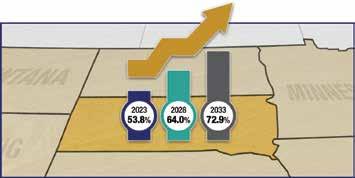
• Nelson Granite is one of the largest granite quarriers and columbarium manufacturers in North America
• 100% granite = little-to-no maintenance
• A municipally-driven columbarium program = easy to oversee and all revenue generated is reinvested in the cemetery

The discussion about workers’ compensation often includes topics such as timely reporting, claim investigation, disputes, and litigation. However, since most claims are compensable and accepted, we would like to explain some of the benefits that the workers’ compensation system offers an injured employee.
Benefits are categorized by indemnity and medical benefits.
INDEMNITY PAYMENTS are for wage loss and impairment.
Temporary benefits are paid for wage loss when a physician writes an order that the employee is unable to work for a period of time longer than seven consecutive days. (SDCL 62-4-2) In order to determine the weekly benefit
rate, we review 52 weeks of payroll prior to the injury. A Form 110 “Calculation of Compensation” is submitted to the Department of Labor and Regulation (DOLR) for approval of the benefit rate.
Permanent benefi ts are paid when a physician determines that the employee has an impairment rating. This percentage of impairment is multiplied by the applicable statute and the weekly benefit rate (SDCL 62-4-6). The following are the types of indemnity benefits paid on a claim file:
• TTD Temporary Total DisabilityEmployee ordered totally off work
• TPD Temporary Partial Disability
- Employee released to work with restrictions
• PPD Permanent Partial Disability
- Physician assesses impairment rating
• PTD Permanent Total DisabilityEmployee is unable to work in any capacity
The most common benefit provided is the MEDICAL BENEFIT.
Medical documentation is required to determine compensability of all claims. Medical benefits are not paid without a physician’s opinion and complete review of the medical records. The medical benefit provides for services such as hospital, doctor, physical therapist, and chiropractor. It also pays travel expenses if treatment is required of a specialist or provider not located in the employee’s work or home community. Personal items such as eyeglasses, hearing aids, and dentures can also be a covered item if they are damaged in an accident which also causes another injury. (SDCL 62-4-1) ■

The South Dakota Municipal Street Maintenance Association (SDMSMA) is now taking scholarship applications from members who wish to attend the annual American Public Works Association's Public Works Expo (PWX).
The SDMSMA offers the scholarships annually to assist towns who might not have the resources to attend on the conference their own. PWX consistently provides a first-class multi-modal learning experience for professionals across the entire spectrum of public works, allowing attendees to bring their new knowledge back and apply it in South Dakota communities.
This year’s PWX conference will be held August 17-20 in Chicago, Illinois. Expo organizers say participants should come prepared to see, hear, touch, and discuss in a variety of traditional and interactive sessions, seminars, workshops, and networking opportunities.
Attendees can also spend time on North America's largest exhibit floor for public works equipment and services where they can kick tires, talk about technology, or get the scoop on new products. PWX draws more than 5,000 public works professionals from North America and beyond each year.
SDMSMA will award up to three scholarships. The association will


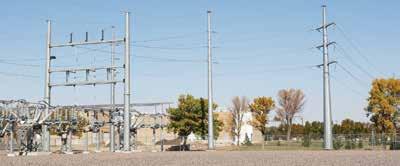
reimburse expenses related to conference registration, lodging, transportation, and meals not included in a conference package. The scholarship winner must keep all receipts and submit them for reimbursement.
Applicants must be a current member of the SDMSMA and willing to share their experience with the membership at the next association meeting.
Apply online at http://sdmunicipalleague. org/streetmaintenance. Applications are due June 1.
Learn more about the PWX at https:// www.apwa.org/event/pwx-2025.
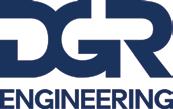


ROB

| SDML DIRECTOR OF MUNICIPAL ELECTRIC SERVICES
The 2025 session of the South Dakota Legislature is officially over. This session was characterized by change in both the House and Senate leadership, as well as the administration.
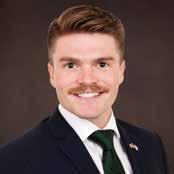
Despite the change, the one issue that continued dominate session was eminent domain for carbon capture pipelines. Much like last year, the SDMEA’s position was mostly neutral, and our main concern was avoiding unintended consequences.
SDMEA actively monitored or opposed 19 bills this session. Of those, only one bill passed and was signed by the governor. That bill was HB 1052, which banned the use of eminent domain for carbon capture pipelines.
Mid-session, Governor Kristi Noem announced her appointment as U.S. Homeland Security Secretary by President Donald Trump. Lieutenant Governor Larry Rhoden assumed the governorship following her confirmation.
A signifi cant legislative development was the enactment of a law banning the use of eminent



domain for constructing carbon dioxide pipelines. This new law poses a substantial challenge to Summit Carbon Solutions' proposed $8.9 billion pipeline, which was intended to transport emissions from ethanol plants across five Midwestern states to North Dakota for underground storage. While the project has received approvals in Iowa, North Dakota, and Minnesota, the South Dakota legislation introduces uncertainty, prompting Summit to reassess its plans.
Lawmakers passed a budget for the upcoming fiscal year, characterizing it as a lean budget that necessitated tough financial decisions. This budgetary approach aimed to balance fiscal responsibility with the funding needs of essential state services.
While the 2025 South Dakota legislative session presented both challenges and opportunities for municipal electric utilities, the SDMEA remains committed to working alongside legislators to ensure that the interests of South Dakota’s public power customers are represented and protected. The SDMEA will continue to engage in the legislative process to shape a future where all South Dakotans benefit from affordable, reliable, and sustainable energy solutions. ■



Organizers have announced that crisis intervention will take center stage at this year’s Code Enforcement Spring Training.
Code enforcement officers who undergo Crisis Intervention Team training learn several specific skills that enhance their ability to handle mental health crises and improve their effectiveness.
Offi cers often get into some serious scary situations, and in rural South Dakota, it may take 20 to 30 minutes or longer for assistance to arrive.
When incorporated into a code enforcement officer's toolkit, these
skills can significantly improve their ability to handle challenging situations, especially those involving mental health crises, while promoting better outcomes for all parties involved.
Other highlights of the training include the South Dakota Association of Code Enforcement (SoDACE) business meeting, roundtable discussions, a session on sustainable ground cover,



and the presentation of the Code Enforcement Officer of the Year award.
Code Enforcement Spring Training will take place May 7-8 at Drifter’s Event Center in Fort Pierre, SD. Registration for SoDACE members is $50; nonmembers are $90.
Learn more and register at www. sdmunicipalleague.org/events. ■



Agri-Business Grant, SD Dept. of Transportation
Due: April 15, July 15, and Oct. 15
Finance Officer of the Year
Due: May 1
Recognizes a member of the SD Governmental Finance Officers' Association who has made significant contributions to their municipality as a finance officer and to their community as citizen. Award presented at the association’s annual Finance Officers’ School. Learn more/apply: sdmunicipalleague.org/ FinanceOfficers
Rural and Tribal Assistance Pilot Program, US Dept. of Transportation
Due: April 3
Offers $27 million in technical assistance grants to rural and tribal communities for the planning and design phase development of transportation projects. No local funding match required to participate. Learn more/apply: https://www.transportation.gov/ buildamerica/RuralandTribalGrants
Recreational Trails Program (RTP) Grant, SD Game, Fish and Parks
Due: April 5
Provides partial reimbursement for approved trail projects including the construction of new public trails, rehabilitation of existing public trails, development of trail-related facilities, and educational programs that relate to recreational trails.
Learn more/apply: www.gfp.sd.gov/partnerships; Grants Coordinator at Kerri.Richards@state.sd.us or 605.773.5490.
Industrial Park Grant, SD Dept. of Transportation
Due: April 15, July 15, and Oct. 15
Open to any local unit of government for the development of new or expanded access for new industry located within industrial parks. Provides for 80% of the construction costs. Grant size is limited to $500,000.
Learn more/apply: https://dot.sd.gov
Open to any local unit of government for the development of new or expanded agri-business industries. Provides for 80% of the construction costs. Grant size is limited to $600,000.
Learn more/apply: https://dot.sd.gov
Land and Water Conservation Fund (LWCF) Grant, Game, Fish and Parks
Due: April 25
The federal aid assistance program provides up to 50 percent reimbursement funds for acquisition and development of outdoor recreation projects. Eligible projects may include playgrounds, ballfields, sport and play fields, picnic facilities, pools, ice rinks, golf courses, amphitheaters, winter sports facilities, visitor information facilities, and land acquisitions.
Learn more/apply: www.gfp.sd.gov/partnerships; Grants Coordinator at Kerri.Richards@state.sd.us or 605.773.5490.
Hazard Mitigation Grant Program, SD Office of Emergency Management
Due: May 30
Available for local governments and certain privatenon-profit organizations to apply for hazard mitigation projects. Funding will first be prioritized in the areas declared a major disaster following the flooding event in SD from June 16 to July 8, 2024.
Learn more/apply: https://dps.sd.gov; Jim Poppen, 605-773-3231 or jim.poppen@state.sd.us

Street Maintenance PWX Scholarship
Due: June 1
Provides funds for three association members to attend the American Public Works Association's Public Works Expo (PWX) in Chicago, IL, in August. Learn more/apply: sdmunicipalleague.org/ StreetMaintenance
Building Officials ICC Code Hearings Scholarship
Due: June 1
Provides funds for two association members to attend an in- or out-of-state ICC Code Hearing of their choice. Learn more/apply: sdmunicipalleague.org/ BuildingOfficials
City Management Training Scholarship
Due: May 1
Provides funds for an association member to attend a professional development training of their choice. Learn more/apply: sdmunicipalleague.org/ CityManagement
Airport Training Scholarship
Due: April 15
Provides several $500 scholarships towards the airfield lighting training to be held in Watertown June 11-12. Limited to two individual scholarships per member airport until all requests are filled. $5,000 in total awards available.
Learn more/ apply: sdmunicipalleague.org/ AirportManagment
CDL Entry-Level Driver Training (ELDT), SD Dept. of Transportation
April 7-9, Rapid City
Learn more/register: https://sdlearn.csod.com
CDL Learners Permit, SD Dept. of Transportation
April 10, Rapid City
Learn more/register: https://sdlearn.csod.com
CDL Entry-Level Driver Training (ELDT): Train the Trainer, SD Dept. of Transportation
April 10, Rapid City
Learn more/register: https://sdlearn.csod.com

Associated General Contractors of America (AGC)
Hazardous Materials Endorsement, SD Dept. of Transportation
April 11, Rapid City
Learn more/register: https://sdlearn.csod.com
Sheriffs' and Police Chiefs' Conference
April 15-17, Deadwood
Annual joint conference of the SD Sheriffs' Association and the SD Police Chiefs' Association where members gather to learn about and discuss recent topics in law enforcement.
Learn more/register: sdmunicipalleague.org/events
Big Sioux Stewardship Summit, City of Sioux Falls and South Dakota State University
April 16-17, Sioux Falls
Registration: Free
Day One feature bus tours highlighting local stewardship efforts. Day Two brings together speakers and stakeholders in the community working on environmental initiatives in the region.
Learn more/register: siouxfalls.gov
Energize Conference, South Dakota State University Extension Community Vitality
May 6-7, Platte
Registration: Early rate of $99 through April 1; $125 before April 18; $175 at the door. Discounts for groups of three or more.

Works to energize South Dakota’s rural communities to develop new ideas and take action to improve their own communities.
Learn more/register: https://extension.sdstate.edu/ events
Code Enforcement Information and Training Conference
May 7-8, Fort Pierre
Registration: $50 - SoDACE member; $90 Non-member
Due: May 1
Annual spring meeting where members learn about and discuss current topics in code enforcement. Includes announcement of Code Enforcement Officer of the Year recipient.
Learn more/register: sdmunicipalleague.org/events
Human Resource School
June 10-11, Pierre
Registration: $50 - SDGHRA member; $100 Non-member
Learn more/register: sdmunicipalleague.org/events
Finance Officers' School
June 11-13, Pierre
Registration: $75 - SDGFOA member; $100 Non-member
Learn more/register: sdmunicipalleague.org/events
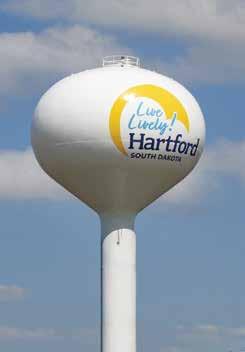

ISG has done a great job working with the City of Hartford, I would recommend them to any city needing help moving forward.
Arden Jones
Mayor of Hartford, SD
SOUTH DAKOTA OFFICES
Dakota Dunes, Pierre, and Sioux Falls

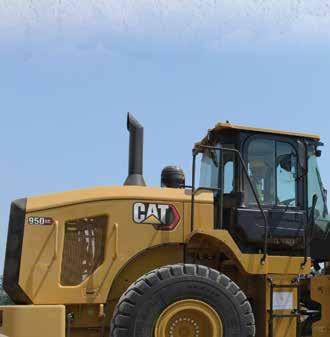
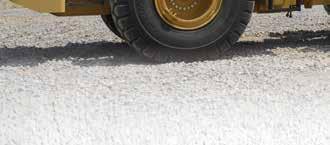
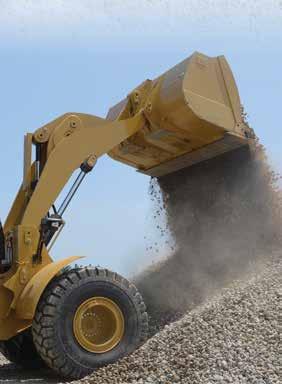





















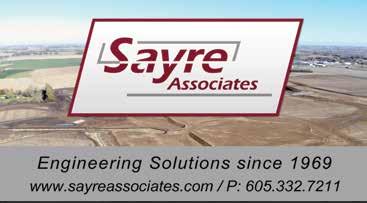
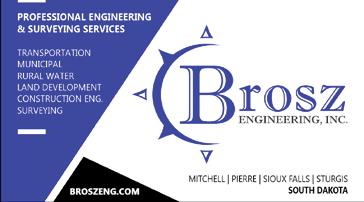












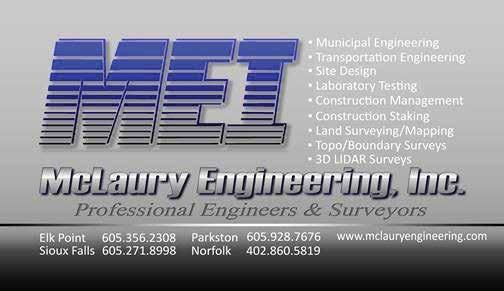































Affordable housing is one of the most pressing issues facing families today, particularly in South Dakota. While this is not a new issue, pressures on the housing market have intensified in recent years leaving communities without adequate workforce housing, senior housing or low-income housing.
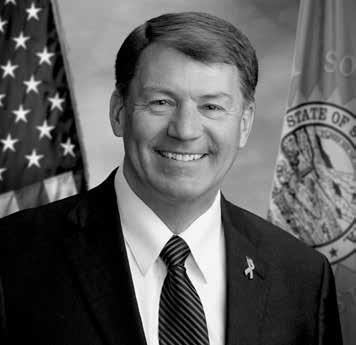
My staff and I have visited with many communities across the state that are implementing innovative solutions to address housing shortages such as tax incentives for developers, spec home development and public-private partnerships. But communities can’t do it alone. That’s why I continue to advocate in D.C. for solutions to lower mortgage interest rates and help move the needle on the housing shortage.
Interest rates are a primary factor influencing whether or when to purchase a home. Currently, interest rates in the United States have been artificially pushed too high because our government is spending too much money. I am very encouraged that President Trump has been giving serious attention to reducing government spending. If our federal government maintains a more reasonable, balanced level of spending, our interest rates will come down making homeownership accessible to more citizens.
I am also encouraged by President Trump’s selection of Scott Turner for U.S. Department of Housing and Urban Development (HUD) Secretary. I voted for Secretary Turner’s confirmation because he shares similar objectives to continue developing and preserving affordable housing in our communities, including rural and tribal areas, cutting red tape and streamlining existing programs that work. The United States Senate has been able to approve all of President Trump’s nominees in record time.
I recently sent a letter to HUD Secretary Turner encouraging him to retain a HUD office in every state. In South Dakota, there is one HUD office which is located in Sioux Falls. This office provides guidance to HUD-funded housing providers, brings awareness of housing market conditions and is a resource for the general public for landlord/tenant conflicts, Section 8 housing and fair housing concerns. Their physical presence is important if we are going to keep a focus on addressing our housing needs.
I will soon be reintroducing The Rural Housing Services Reforms Act which updates and streamlines many USDA Rural Housing programs that are vitally important for preserving our existing housing and retaining homeownership opportunities in our rural communities.
In January of this year, I co-sponsored the WholeHome Repairs Act, a bill to preserve housing by providing essential home repair financial assistance to low-and-moderate income homeowners and local landlords. This Act will not only provide an opportunity to preserve housing units, but it will also establish a new standard for how federal programs can operate more efficiently.
Last November, my legislation, the Native American Direct Loan (NADL) Improvement Act, was included in the Elizabeth Dole Veteran’s Healthcare and Benefits Act which passed the House and Senate and became law on December 23, 2024. This important legislation allows eligible borrowers to utilize the Veteran Administration’s NADL program for refinancing existing mortgages and creates a relending program with Native Community Development Financial Institutions. With this legislation, more of our Native American veterans will be able to achieve the American dream of homeownership.
Unfortunately, there is no quick fix to housing shortages. But through thoughtful federal and local actions, we can address housing challenges and make meaningful improvements. ■
City Administrator, City of Little Canada, MN. The City desires a leader who can build a human-centric environment, assuming the roles of mentor, director, and doer. They will be considered a primary face of the community with the skills and savvy to communicate clearly and tactfully. Successful candidates demonstrate leadership by asking questions, delegating decisions, and carrying some of the workload when needed. They will champion bold ideas and think strategically with the ‘big picture’ in mind. Qualified candidates shall possess a bachelor’s degree in public administration (Master’s preferred) or a closely related field and at least two years of increasingly responsible management experience in an executive position such as department head, city assistant manager/ administrator, city manager, or city administrator. Salary Range: $144,310.40 - $180,523.20. To apply, email resume, cover letter, and five references to richard.fursman@hue.life. Closes April 11 at 4:30 p.m.
City Manager – City of Watertown, SD. Serves as Chief Administrative Officer for the City; they provide leadership with the development and execution of the City’s strategic vision; they provide policy
support to the Council; direct the executive level managers and reviews overall operational performance; and exercise budgetary and contractual control over revenue and expense for the City. The position requires a proactive/results-oriented business mindset and a collaborative management style. Compensation for this role includes a salary range of $175,000-225,000 (depending on experience), plus benefits. Learn more at sdmunicipalleague.org/ networking. Open until filled.
Liquor Store/Bar Manager – City of Kadoka, SD. Retail and/or managerial experience is beneficial, but not required. Please return letter of interest, resume and/or completed application form to City Finance Officer, PO Box 58, Kadoka, SD 57543. Application forms are available at the City Finance Office. Full time. Includes health, dental, and retirement benefits. Salary range $30,000 to $50,000, depending upon qualifications. Please call the City Finance Office at (605) 837-2229 if you have any questions. Open until filled. EOE.
Office Assistant/Digital Records Position – City of Hill City, SD. Performs skilled computer website management and network file management including digitization. Responsible for the online posting of public information, managing online calendars for various public entities, and will be the point of contact for the City Cemetery. Seeking experience in complex word processing, spreadsheet and querying software, bookkeeping principles, strong proofreading, and general office skills, Grant research and application experience will receive preferential consideration. Requires achieving and maintaining SD Food Service Certification.

Full-time benefitted position. Salary: $40,000/year. Learn more and apply at www.hillcitysd.org, or call (605) 574-2300. Open until filled. EOE.
Building Official – City of Spearfish, SD. Responsible for overseeing and enforcing all aspects of building codes, construction standards, and safety regulations within the City and is various jurisdictions. Ensures that construction projects comply with local, state, and federal laws, safeguarding the health, safety, and welfare of the public. Manages plan reviews, issues permits, conducts inspections, and provides guidance to contractors, developers, and the public. Serves as a technical expert and advisor on building-related matters. Hiring salary range: $39.30 - $47.88; position range: $39.30 - $59.79 (salaried/exempt position). Learn more and apply at https://www. spearfish.gov. Open until filled.
Communications Specialist (E-911) – City of Mitchell, SD. Responsible for answering emergency and non-emergency calls and for dispatching appropriate personnel. Some of the duties are: provide guidance to callers until emergency personnel arrive on scene; receives and transmits radio and telephone communication; monitors security cameras; and greets and assists visitors at the
customer service window. No experience in the field is necessary; however, sufficient experience to understand basic principles relevant to the major duties of the position. Possession of or ability to readily obtain NCIC and EMD Certification. Starting wage: $23.152 per hour plus benefits. Learn more and apply at www. cityofmitchellsd.gov. Open until filled.
Community Development Manager – City of Yankton, SD. Under administrative direction provides support services and conducts research for community and economic development projects, other departments as assigned, and enforces City Ordinances relating to, but not restricted to vegetation, snow removal, public nuisances and some building and zoning actions within the City of Yankton and extra-territorial jurisdiction limits. Assists with economic development and planning activities. Applications are available from the Human Resources Office at 416 Walnut Street, Yankton, SD 57078, or by phone at (605) 668-5222, or on the City website www.cityofyankton.org/employment. Open until filled.
Building Official/Code Enforcement Officer - City of Madison, SD. Responsible for inspecting structures, enforcing housing codes and maintenance, implementing building codes, enforcing nuisance





“Financial plans are more than just about money. They’re really about education and providing you with the knowledge you need to make the best decisions for your community.”
Miranda Kleven, PE, AE2S Special Projects Engineer
Award-Winning Best Place to Work










ordinances in the city and provides staff assistance regarding zoning violations and land use complaints. Play a vital part in protecting public safety, preserving property values, and enhancing the quality of life for residents. Work is performed both in an office and outdoors, typically Monday through Friday, 7 am - 4 pm. $31.71/hour plus benefits. Learn more and apply online at www. CityofMadisonSD.com/Jobs. Open until filled. EOE.
Engineering Administrative Assistant – City of Box Elder, SD. Responsible for providing high-level administrative support to the Engineering Department. Facilitates the efficient operation of the department by performing a variety of clerical and administrative tasks. Provides administrative support and assistance to the City Engineer by performing clerical and administrative duties including drafting letters, emails memos, and preparing invoices, reports, and other documents. Receives phone calls, emails, and other forms of communication, effectively relaying messages, and information for the department. Prepares, updates, and maintains department electronic and hard files. $22.83-23.97 per hour. Learn more and apply at https://www.boxeldersd.us.
Project Engineer, Public Works Department – City of Spearfish, SD. The project engineer provides project management on city projects, including construction inspection, quality control, and surveying/staking (as necessary), performing plan reviews, project coordination, and various aspects of capital planning and asset management. Salary: PE - $81,744.00 - $124,363.00 position range DOQ; FE - $67,080.00 - $102,086.40 position range DOQ Learn more and apply at https://www.spearfish.gov. Open until filled.
Utility System Engineer – Watertown Municipal Utilities, Watertown, SD. Responsible for designing infrastructure to comply with codes to meet current and future capacity needs, estimating costs of projects, managing projects, personnel, and outside stakeholders while coordinating activities with internal departments and outside entities. Requires a strong understanding of engineering principles, regulatory compliance, and project management. Learn more and apply at www.watertownmu.com. Open until filled.
Financial Analyst – City of Box Elder, SD. Responsible for performing professional financial management and analysis work in the areas of revenue and capital improvement planning for the City of Box Elder. Tracks, records, and reconciles revenue centric financial transactions to ensure consistency and compliance with fiscal rules; creates reports for historical records, audits, and the evaluation of financial processes with transactions. Supports the Assistant Finance Officer on all aspects of budgeting; tracks, monitors, and projects expenditures, and prepares justifications and reports as needed.
SALARY: $67103.37-74,069.56 per year. Learn more and apply at https://www.boxeldersd.us.
Finance Officer – City of Delmont, SD. Responsible for maintaining financial, accounting, administrative and personnel services for all departments, in order to meet legislative requirements and support municipal operations. Reports to the Mayor and Council and is responsible for preparing financial statements, maintaining cash controls, preparing the payroll and personnel administration, purchasing, maintaining accounts payable and managing office operations. The Finance Officer is the official responsible for keeping all papers and records of the municipality. Must work within the Town of Delmont’s policies/procedures/ordinances and in compliance
u SIOUX FALLS
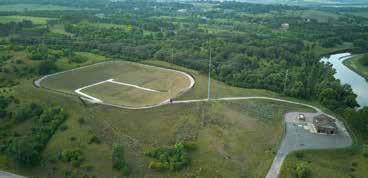
Providing engineering and technical management solutions that build communities and improve lives.
BROADBAND + CONSTRUCTION + ENVIRONMENTAL GEOSPATIAL + LAND DEVELOPMENT + MUNICIPAL PLANNING + TRANSPORTATION + WATER
with South Dakota Codified Law. Questions: Barb Dozark, 605-7792621, delmontfinance@midstatesd.net. Application and resume may be sent to: Delmont Finance Office, PO Box 202, Delmont, SD 57330. Open until filled.
Finance Officer - City of Eureka, SD. Demonstrated knowledge of municipal financial management, business administration, local/ state government issues. Ability to plan, organize, and financially direct a complex business; to present ideas clearly, orally, and in writing, and to work effectively with others. Supervises the Deputy Finance Officer. Bachelor's degree in business or public administration preferred or three years' experience of clerical position in Municipal Government. Position is benefit eligible. Apply at the City of Eureka, PO Box 655, Eureka, SD 57437. Contact the City Office at 605-284-2441 for more information. Open until filled. EOE.
Senior Accountant/CPA – City of Sioux Falls, SD. As the Senior Accountant leading accounts receivables, collections and supporting financial coordination during emergency disaster events, you will play a crucial role in ensuring the financial stability of our city. You will be responsible for managing and coordinating all aspects of accounts receivable and the collections processes. Your primary goal will be to manage collections, maintain accurate receivable records and communications, streamline and document processes, ensure accurate city-wide financial statements, and maintain positive relationships with internal and external customers. HIRING RANGE DOQ: $2,772.00 - $3,060.80 bi-weekly; $2,859.20$3,157.60 bi-weekly with CPA. Learn more at https://www.siouxfalls. gov/government/careers. Open until filled.
Senior Collections Representative, Brookings Municipal Utilities –City of Brookings, SD. Under the direct supervision of the Billing & Collections Supervisor, this position is responsible for coordinating collection activities in line with established policies and procedures. Performs collection work and is responsible for directing and coordinating collection department personnel. Wage Range: $24.94-$33.25. Open until filled.
Medical Assistant, Falls Community Health - City of Sioux Falls, SD. Looking for a qualified individual who is interested in working in both medical and pharmacy settings. Will provide on-the-job training to obtain their pharmacy technician certification. Graduation from high school or GED certification and certification as a Medical Assistant in the state of South Dakota with a minimum of one (1) year’s medical assistance experience preferred; or any such combination of education, experience, and training as may be acceptable to the hiring authority. Obtain Pharmacy Technician certification within 1 year of hire. Salary: $20.80 - $22.42 hourly. Learn more and apply at www.siouxfalls.gov/careers. Open until filled.
Information Technology Technician I – City of Rapid City, SD. Are you passionate about technology and excited to help others solve technical challenges? Join our team as an IT Technician I, where you’ll play a key role in supporting our organization’s IT operations. In this role, you’ll assist with troubleshooting issues, maintaining systems, and providing exceptional technical support to ensure smooth day-to-day operations. If you’re eager to learn, a great problem-solver, and ready to make an impact, we’d encourage you to apply! Apply today to join our team! Learn more and apply at https://www.governmentjobs.com/careers/rapidcity. Open until filled.
Communications Officer, Police Department - City of Spearfish, SD. This position is responsible for performing emergency and non-emergency communications functions. Learn more and apply at www.cityofspearfish.com/161/Career-Opportunities. Open until filled. EOE.
Patrol Officer – City of Pierre, SD. Performs law enforcement & public safety duties as necessary to maintain law & order in
the City of Pierre. Must be at least 21 years of age, have a high school diploma or GED, & pass the police entry level examinations including a background investigation. Prior experience in law enforcement is desirable. Certified officer preferred. Up to $2000 annually for educational reimbursement. Up to $6000 hiring bonus. Comprehensive benefit package. Learn more and apply: Human Resources Office, City of Pierre, Box 1253, Pierre, SD 57501, (605)773-7429, www.cityofpierre.org. Open until filled. EOE.
Patrol Officer - City of Mitchell, SD. Responsible for the enforcement of federal, state, and local laws and the protection of life and property. Some of the job duties include: patrol the city to detect and deter criminal activity and traffic violations and to provide assistance as needed; monitors commercial and residential areas for signs of criminal activity; responds to calls for service, including domestic disputes, assaults, burglaries, traffic accidents, lost or missing persons searches, public service requests; completes required reports and forms, including accident and incident reports. Starting wage: $29.636 per hour. $3,000 relocation stipend. Competitive benefits. Learn more and apply at www.cityofmitchellsd.gov. Open until filled.
Police Officer – City of Box Elder, SD. Join our team at the City of Box Elder, where we're seeking dedicated individuals to uphold our commitment to excellence, teamwork, and respect. As a member of our highly trained and professional force, you'll play a crucial role in enforcing federal, state, and local laws while safeguarding the lives and property of our community members. Starts at $27.14 hourly depending on experience and qualifications. Generous paid time off program, 10.5 paid holidays per calendar year and excellent benefits which include employer paid health, dental, and vision, and life for the employee, along with enrollment in the South Dakota retirement plan. Learn more and apply at the Human Resources page at www.boxeldersd.us. Open until filled.
Police Officer – City of Spearfish, SD. Enforce local, state, and federal laws, prevent and suppress crime and accidents, and promote public safety through community policing principles. This position will be responsible for the investigation of criminal cases as assigned. Full-time position. Learn more and apply on the “Career Opportunities” page at www.cityofspearfish.com. ~Sign-On Bonus $6,000~ Competitive benefit package. Open until filled. EOE.
Police Officer - City of Springfield, SD. General law enforcement to preserve public peace, protect lives, property and rights of the public as well as to enforce statutory law and municipal ordinances. $28.00 – 32.00 DOEQ; Eligible retention bonus $3,000-$5,000. Competitive benefits. Formal application required, resumé with experience, education, qualifications recommended; potential oral interview and reference check; job related tests may be required. Contact the City of Springfield Finance Office for more information and/ or an application at amanda.larson@springfieldsd.gov, or (605) 369-2309. Open until filled.
Aquatics Director, Evans Plunge Mineral Springs – City of Hot Springs, SD. Responsible for technical and administrative work that involves overseeing the safe and effective operation of buildings, facilities and equipment with primary emphasis on the swimming pools, hot tubs, and health club amenities at Evans Plunge. Work involves management of the lifeguards and slide dispatchers. Work
will regularly involve providing lifesaving assistance, ensuring the safe use of the pool facilities, and safeguarding the conduct of pool patrons. Wage: DOEQ-$20.53-TOS. Competitive benefits. Complete a City of Hot Springs Job Application. Resume & cover letter are encouraged. Applications can be sent to Kari MulockFacility Director, or dropped off at City Hall 303 N River St. Hot Springs, SD. Open until filled.
Advanced Equipment Operator – City of Brookings, SD. Responsible for performing manual to semi-skilled tasks to include street repair and maintenance, mosquito and/or weed control, operation of light and heavy equipment related to street maintenance and snow removal. Valid CDL required. 2025 Wage: $22.838 - $30.898/ hr. Learn more and apply at https://www.cityofbrookings-sd.gov/ careers. Open until filled.
Assistant Operations Manager – City of Viborg, SD. Qualified candidates will have experience operating heavy machinery, working as a member of a team, and a valid CDL. Will serve under the direction of the Operations Manager and will perform tasks in the City, Streets, Parks, Water, and Sewer Departments. Knowledge of water distribution and wastewater collections systems is helpful but not required. Hiring range is $18-$23 hourly (depending on experience). Includes full benefits package. Applications available online at www.viborgsd.org under business>jobs>download application. Email your application to cityofviborg@hcinet.net. Contact City Hall at 605-326-5103 with questions. First review Jan. 29. Open until filled. EOE.
Heavy Equipment Operator – City of Brookings, SD. Responsible for performing manual and skilled tasks; operating light and heavy equipment related to street maintenance and snow removal work of an above average difficulty with a heavy emphasis on grader and/ or loader operation by performing the following duties. Performs unskilled and semi-skilled work during slack or seasonal periods. Valid CDL required. 2025 Wage: $25.18 - $34.06/hr. Learn more and apply at https://www.cityofbrookings-sd.gov/careers. Open until filled.
Heavy Equipment Operator – City of Pierre, SD. Responsible for operating a variety of heavy equipment used in installing, maintaining and repairing water and sewer lines and mains. Manual labor is also required for system maintenance. MINIMUM QUALIFICATIONS: A Class I Water Distribution certification from the State of SD Board of Operator Certification within 18 months of employment. Ability to perform manual labor which involves heavy lifting. Experience operating equipment such as a backhoe, motor grader, excavator, ditch-witch, boom truck, and front-end loader. Possession of or ability to obtain a Class A CDL required. Comprehensive benefit package and benefits. Up to $2000 annual educational assistance available. Wage offer will be based upon actual education and experience. UP TO A $3,000 HIRING BONUS! Learn more and apply at www.cityofpierre.org. Open until filled.
Public Works Director (part-time) – City of Delmont, SD. Performs work in maintenance of all phases of water distribution and supply, wastewater collection system and lagoon, maintenance and repair of streets and alleys, maintenance of parks, dump ground, any and all city property. Questions: Barb Dozark, 605-779-2621, delmontfinance@midstatesd.net. Application and resume may be sent to: Delmont Finance Office, PO Box 202, Delmont, SD 57330. Open until filled.
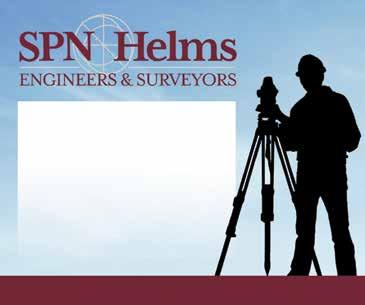
Water and Wastewater Distribution, Collection, and Treatment
Streets, Airports, and Drainage
Land Surveying and GIS
Master Planning and Land Development
Recreation Trails, Swimming Pools, and Sports Complexes
Public Works Director – City of Fort Pierre, SD. Provides technical assistance that will impact decisions on the day-to-day distribution of the workload of field staff, tactfully handles engineering related questions or problems, works with the City Superintendents, Assistant Public Works Director, or other staff for resolution of such issues. Maintains a professional presence and respectfully answers questions by staff and general public. $2,000 Hiring Bonus. Minimum starting salary $90,000/yr negotiable depending on qualifications and certifications, plus excellent benefits. Learn more and apply at www.fortpierre.com (Employment Opportunities). Open until filled.
Sewer Collection Maintenance Technician - City of Pierre, SD. Provides services in the water and wastewater departments by repairing and maintaining sanitary and storm sewer mains. A CCTV van including computer applications to video and inspect sanitary and storm sewer lines. Operates a Vactor truck to clean sewer lines, storm lines, lift stations, and multiple structures located around the city. Performs smoke testing, bypass pumping and flow monitoring. Wage: $24.59 minimum plus comprehensive benefit package. Up to $2000 annual educational assistance available. Wage offer will be based upon actual education and experience. UP TO $3000 HIRING BONUS! Learn more and apply at www.cityofpierre.org. Open until filled.
Street Maintenance Worker – City of Pierre, SD. Responsible for manual labor and operating street sweepers and snowplows to maintain city streets. ESSENTIAL DUTIES: Manual labor, such as shoveling, raking asphalt, etc. is required. Skill in operating and maintaining equipment such as street sweeper, truck, roller, snowplow, skid steer, and front-end loader. Must have possession of or ability to obtain a Class B CDL with air brakes and tanker endorsements. Comprehensive benefit package. Up to $2000 annual educational assistance available. Wage offer will be based upon actual education and experience. UP TO $3000 HIRING BONUS. Learn more and apply at www.cityofpierre.org. Open until filled.
Street Maintenance Worker / Mechanic Assistant – City of Vermillion, SD. Duties to include: required labor as part of a public








American Council of Engineering Companies of SD www.acec.org/sd
Cunningham Recreation/ GameTime www.cunninghamrec.com
SD FIT (SD Funds Investment Trust) www.sdpfit.org
SDML Workers' Compensation Fund, Administered by Insurance Benefits, Inc. www.sdmlwcfund.com
Stockwell Engineers www.stockwellengineers.com
works crew for the maintenance and repair of City streets and other public rights-of-way, and performs skilled work in the maintenance and repair of light and heavy-duty municipally-owned automotive machinery and equipment. Applicant must be able to pass a fitfor-duty physical and job function test. To learn more about the position and to complete an application, please visit the City of Vermillion's job page: https://www.vermillion.us/Jobs.aspx. Open until filled.
Wastewater Operator – City of Hot Springs, SD. Performs a variety of unskilled and semi-skilled maintenance work, and operates a variety of equipment and tools in the construction, operation, repair, maintenance, and replacement of City of Hot Springs water supply, distribution, or wastewater treatment facilities and systems. May also be assigned to provide general public works maintenance support work in other public works areas. Wage: DOEQ $15.74 TOS. Competitive benefits. All applicants must fill out a City of Hot Springs Job Application to be considered. Resume & cover letter are also encouraged for all full time positions. Applications can be sent to Tracy Bastian-Public Works Engineer or dropped off at City Hall 303 N River St. Hot Springs, SD 57747. Open until filled.
Wastewater Plant Specialist – City of Hartford, SD. Oversees the daily operations of the city’s Aeromod mechanical wastewater treatment plant. Requires self-motivation, technical knowledge, and a commitment to maintaining the plant’s operation efficiency and regulatory compliance. Responsible for the testing, reporting, maintenance, and upkeep of the plant and grounds while ensuring that all processes meet environmental standards and safety
regulations. Full-time, year-round position with full benefits. Candidate should have experience in wastewater treatment operations. A high school diploma or equivalent is required, but possessing a degree in environmental science, engineering, or related field is a plus. Wages will be commensurate with experience and qualifications. A complete job description and application available at www.hartfordsd.us. Closes May 2.
Wastewater Treatment Operator I, II, III – City of Spearfish, SD. Responsible for the operations and maintenance of the wastewater treatment plant. Qualifications: Knowledge and level of competency commonly associated with completion of specialized training in the field of work; sufficient experience to understand the basic principles relevant to the major duties of the position, usually associated with the completion of an apprenticeship/internship or having had a similar position for one to two years; possession of or ability to readily obtain a valid Class B commercial driver's license. Wage dependent on operator level; ranges from $21.7330.70, plus an additional $3 per hour CDL stipend. Learn more and apply at https://www.spearfish.gov/161/Career-Opportunities. Open until filled.
Water Crew Supervisor – City of Pierre, SD. The City of Pierre seeks a passionate individual to join our team in making Pierre one of the best places to live, work, and visit. This position supervises a crew of personnel and operates heavy equipment in the construction, repair and maintenance of the water distribution system as well as wastewater collection and storm sewer infrastructure. Apply to: City of Pierre Human Resources Director, P.O. Box 1253, Pierre SD 57501, (605) 773-7429, www.cityofpierre.org. Open until filled. ■
The SDML office will be closed APRIL 18 & 21
In addition to State holidays, the SDML office is closed any days granted as administrative leave by the governor. Gov. Rhoden has granted Good Friday and Easter Monday as administrative leave for 2025.


At least one day before the election
– The Finance Officer must deliver the precinct registration lists to the local election officials. (SDCL 12-4-24; See Hdbk., sec. 7.170)
Second Tuesday of April – Annual elections for the officers of a municipality are required to be held. (SDCL 9-13-1; See Hdbk., sec. 7.050) A municipality may combine its election with a school district election and hold
this election on the school election date (third Tuesday in June) or on the first Tuesday in June, or in conjunction with the June primary. (SDCL 9-13-1.1; 9-1337; 9-13-6)
Second Tuesday in April – The consolidated board of equalization meets and completes equalization in no more than three weeks. (SDCL 10-1166 through 10-11-76; See Hdbk., sec. 12.120)
Within two days after the election is declared – The fi nance offi cer must notify all persons elected to office. The officials elected to office then have ten days after the first meeting of the month next succeeding the election to qualify for the office by filing an oath or affirmation of office. (SDCL 9-13-28) If the governing body chooses an election day other than the second Tuesday of April, as provided in SDCL 9-13, that Election Day must be established by
January 14 of the election year. (SDCL 9-13-1)
Within seven days following the election – Election returns are to be canvassed. (SDCL 9-13-24; See Hdbk., sec. 7.600)
Three weeks from Election Day – If a municipality has passed an ordinance requiring a secondary election and no candidate in a race involving three or more candidates receives a majority of the votes cast, a secondary election shall be held three weeks from the date of the first election. Provisions for tie votes in the first election are also provided for. The person receiving the highest number of votes at the secondary election is elected. (SDCL 9-13-26.1; See Hdbk., sec. 7.600)
June elections – Follow the Municipal Election Calendar for all election deadlines. ■


D.A. Davidson & Co. is committed to strengthening the infrastructure and enriching the lives of people in our communities throughout South Dakota and across the nation.
Our public finance bankers average over 20 years of experience in conventional fixed-rate debt financing, variable-rate bonds, creditenhanced structures and non-rated bonds.

First meeting in May – The financial officer is required to make an annual report to the governing body no later than the first regular meeting of May each year. The report must include the receipts, expenses, and financial condition of the municipality, including the amount of funds in the treasury at the time of making the report and where and in what amounts such funds are deposited or invested. The report shall be published in the official newspaper within thirty days after the report is made to the governing body or on completion of the annual audit.
By the last day of May each year, the finance officer shall file a copy of the report with the Department of Legislative Audit. (SDCL 9-22-21; See Hdbk., sec. 12.080)
No later than May 1 – The liquor tax reversion must be made. (SDCL 35-5-22; See Hdbk., sec. 11.600)
May 1 – Special assessment installments which are payable under either the Plan One or Plan Two options become delinquent. (SDCL 9-43-109; See Hdbk., sec. 12.160)
First meeting following election – Except as otherwise provided, every offi cer of the municipality will begin to discharge the duties of the office as soon as the officer has qualified by filing an oath or affirmation of office. The oath must be filed within ten days after the first meeting of the month following the election or appointment. (SDCL 9-14-5; See Hdbk., sec. 5.115)
First meeting following election – Appointed municipal officials are usually appointed. The appointment may be annual, or for an interval determined by the governing body. (SDCL 9-14-3)
First meeting following election – In municipalities having the mayor and common council form of government, the council must elect a president and vice-president for the ensuing year. (SDCL 9-8-7; See Hdbk., sec. 2.520)
First meeting following election – In municipalities governed by a mayor and four commissioners, the board must designate by a majority vote, the following commissioners: Public Safety, Public Works, Utilities, and Finance and Revenue. Commissioners are assigned areas of responsibility under the law. (SDCL 9-9-18 to 9-9-24; See Hdbk., sec. 2.590)
First meeting following election – In municipalities governed by a mayor and two commissioners, the board shall by a resolution adopted by a majority, assign and apportion between the members, all duties that are not assigned to the mayor. (SDCL 9-9-27; See Hdbk., sec. 2.595)
First meeting following election – In those municipalities employing a city manager and under the commissioner form of government, at the first regular meeting in the month following the annual election, the commissioners must elect one of their members to serve as mayor for a term of one year. (SDCL 9-10-6; See Hdbk., sec. 2.615)
By May 15 – The secretary of revenue shall apportion the money in the local government highway and bridge fund. (SDCL 32-11-35; See Hdbk., sec. 12.255(6))
Tax levy – The governing body of the municipality may impose an excess tax levy with an affirmative two-thirds vote of the governing body on or before July fifteenth of the year prior to the year the taxes are payable. The decision to increase taxes must be published within 10 days of the decision (certain publication size restrictions apply) and may be referred upon a petition signed by at least five percent of the registered voters in the municipality and filed within twenty days of publication of the decision. The referendum election shall be held on or before October first preceding the year the taxes are payable. (SDCL 10-13-36; See Hdbk., sec. 12.170)
Last Monday of May – Memorial Day – State holiday (SDCL 1-5-1)
June elections – Follow the Municipal Election Calendar for all election deadlines. ■










• 100 Locations Nationwide / 5 in South Dakota
• 3,000 Team Members
• Full-Service Engineering & Surveying
• Building Design & Infrastructure
• Municipal & Transportation Infrastructure
• Sustainability & Energy Solutions
• Consulting & Advisory Services






